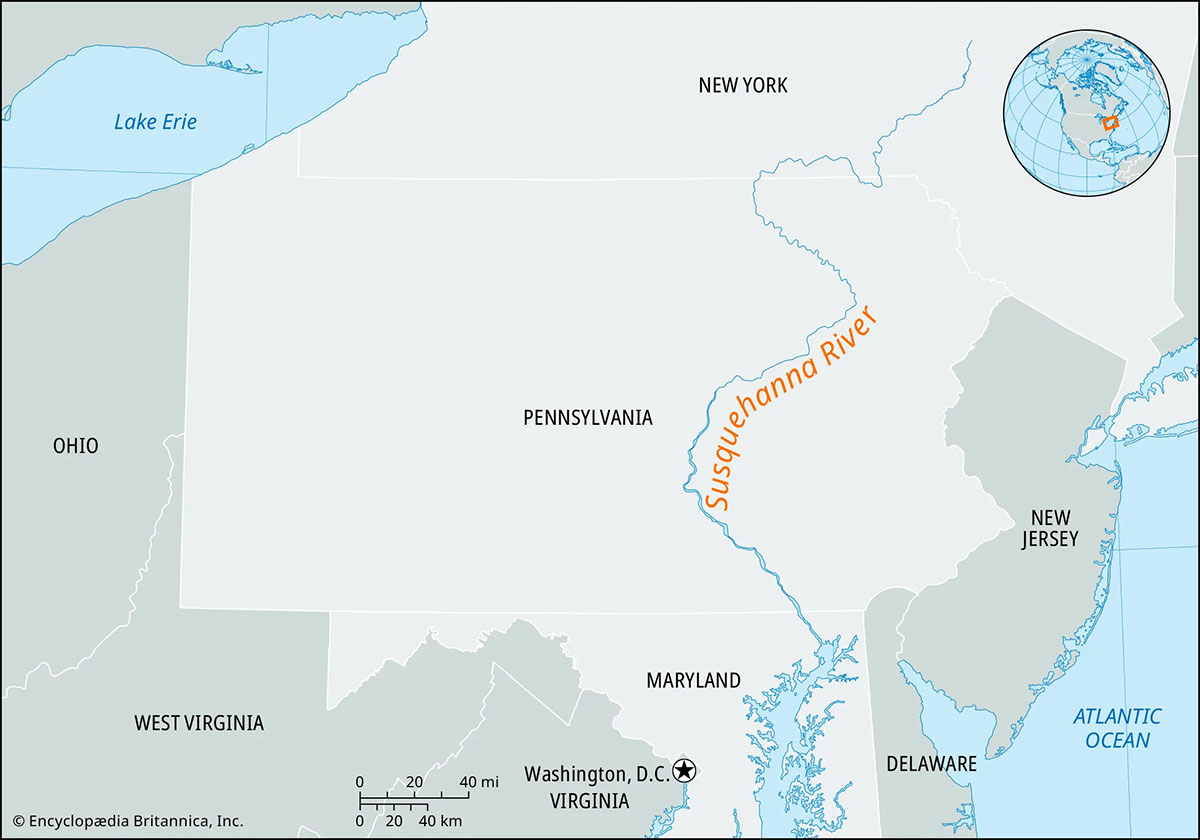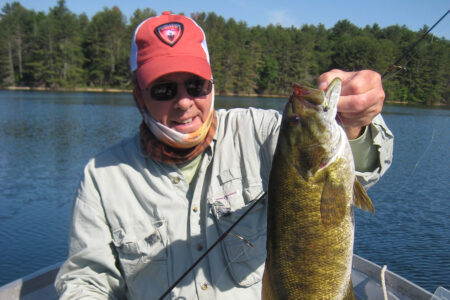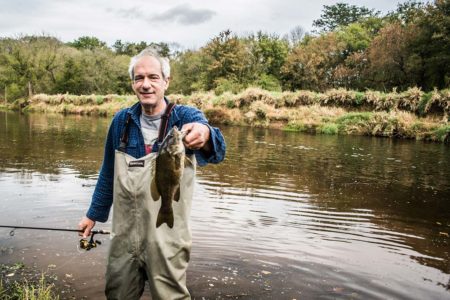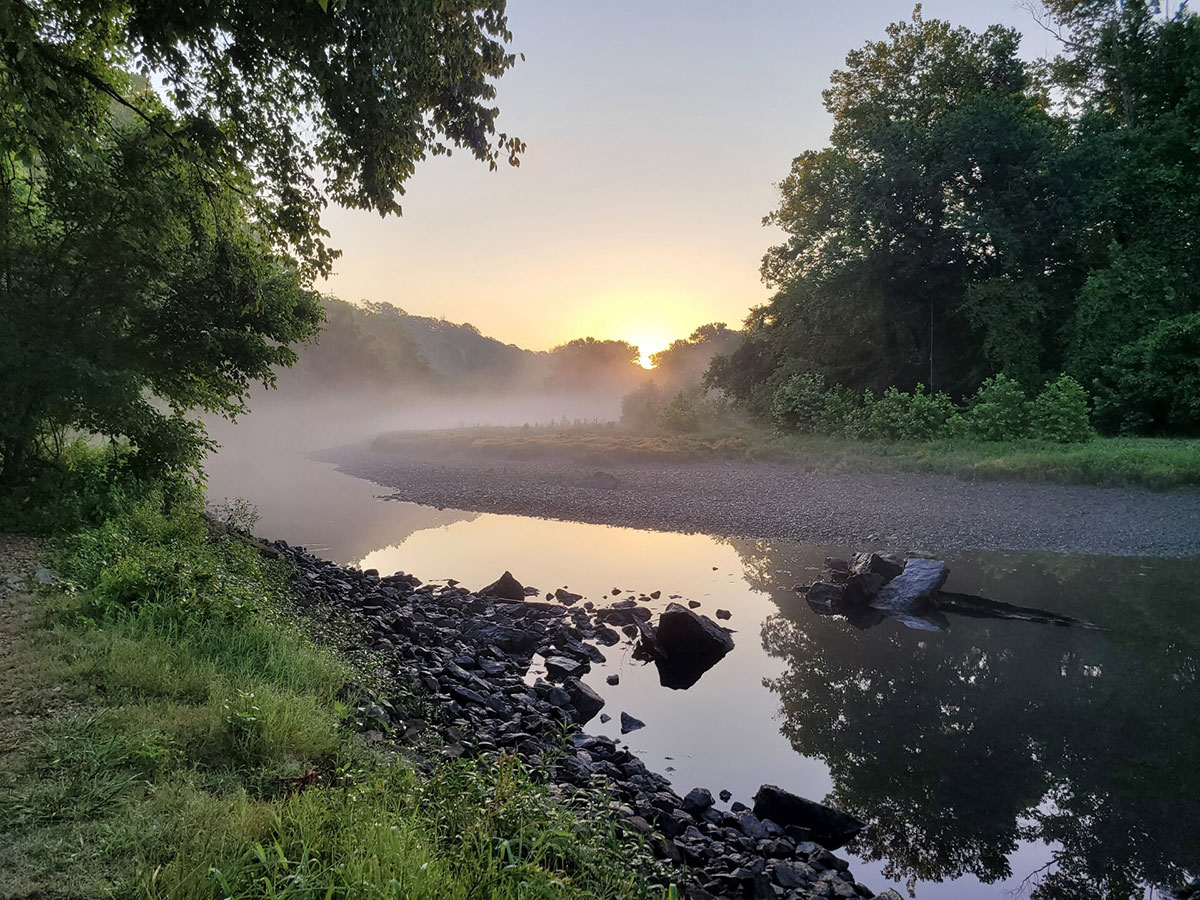
A seasonal look at ‘smallies’ on America’s 16th largest river.
The smallmouth bass, a gravel-bottom-favoring counterpart to the incredibly popular largemouth bass. These powerful fighting fish are a special treat because of how abundant they are throughout the Appalachians and the Northeast states.
For Pennsylvanians, we’re greeted with an even better opportunity in the Susquehanna River. With over 400 miles of fishable water, the Susky is an absolute goldmine for smallmouth bass anglers and well worth the trip for anglers throughout the tristate region.
I’ve spent decades fishing these waters through all conditions, seasons, weather, and environmental issues. As is the case with most freshwater fish, seasonality is going to be the primary driver behind where you fish and what you throw.
Spring Into Summer
Come late spring, post-spawn is a favorite time of mine along the river – hit the banks hard with bright spinners and crankbaits. Keep in mind that the males might still be holding to the shoreline along their spawning beds, so expect to fish shallow depths of 4 feet or less. Smallies tend to be more active during the warmer parts of the day in late spring. As the water temperature rises, you can have success throughout the daylight hours, although dawn and dusk can still be particularly productive.
As far as specific locations go, I think it’s a supermarket sweep at this point. I have most of my success throughout the upper branch extending from Wyoming through Columbia and Northumberland County. This is an especially popular area where the middle Susky meets the west branch. Here you can find catfish, rainbow trout, and other species as well.
Throughout Northeast Pennsylvania, as summer temps are sitting around 75 to 85 degrees in the valley and about 5 to 10 degrees cooler in the rolling hills, this is the time you want to aggressively hit the deeper pools and pockets throughout the north branch of the river. Smallmouth bass in the Susquehanna tend to concentrate in deeper pools and riffles during the summer months. These areas will also feature fast currents with oxygen-rich water, which is exactly what the smallies are looking for.
Since the temperatures are so high this time of year, you’ll want to get out there around dusk or dawn when they’re most active.
Whenever I hit the north branch extending from Bradford into Wyoming County, I like throwing topwater poppers or shallow diving crankbaits that’ll make a lot of noise and bang off the rocky shorelines. These are effective in deeper pools and calmer waters along the northern section of the river as well.
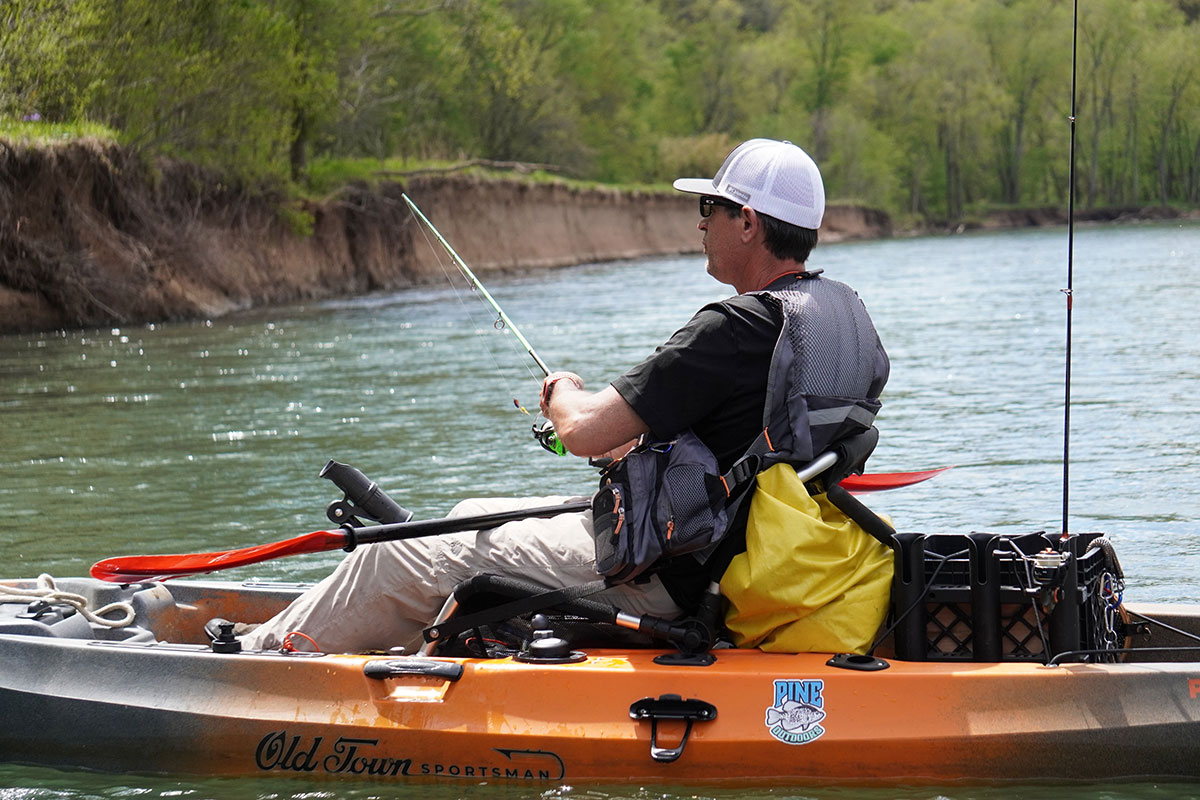
Early Fall & Winter
Late summer and early fall bring cooler temperatures dipping down into the 50s at night. This cools down the water so the smallies start to transition to deeper pools, channels, and rocky ledges. Expect to find them around 8 to 12 feet deep, and I recommend hitting the river mid-morning and mid-afternoon. Since the scorching temperatures have left and cooler temps are coming in at night, the water temperature will sit around 60 to 65 degrees. If you’re using any fishing technology to track, you’ll want to pay special attention to these temps and adjust your depth based on that.
I talked to Captain Steve from Two By Two Charters about some of the issues I had with catching smallies during a sharp cold snap we had when water temps had dipped down into the 40s and 50s. “Throughout Northeast PA and Upstate NY we have something called, ‘fake winter’ each year,” Steve said, explaining how there’s typically a two- to three-week stretch sometime in October or November where freezing night temperatures cool the river as it flows down from the north branch. “This unlocks the crawfish’s second mating cycle which is one of the smallies favorite treats,” Steve said, adding “If you’re dealing with lower than average temperatures in the fall, throw crawfish imitations in natural colors and you’ll clean up.”
Not only is it important to understand what to throw, but you’ll also want to understand river migrations. Thinking like a smallie who prefers cooler temperatures will help you understand what they’re likely to hold to. If the water temperature dips, they’ll retreat to slower-moving water. If you’re fishing the north and middle branches of the river (which you should for smallies), you’re more likely to find them in the calmer waters throughout Luzerne County.
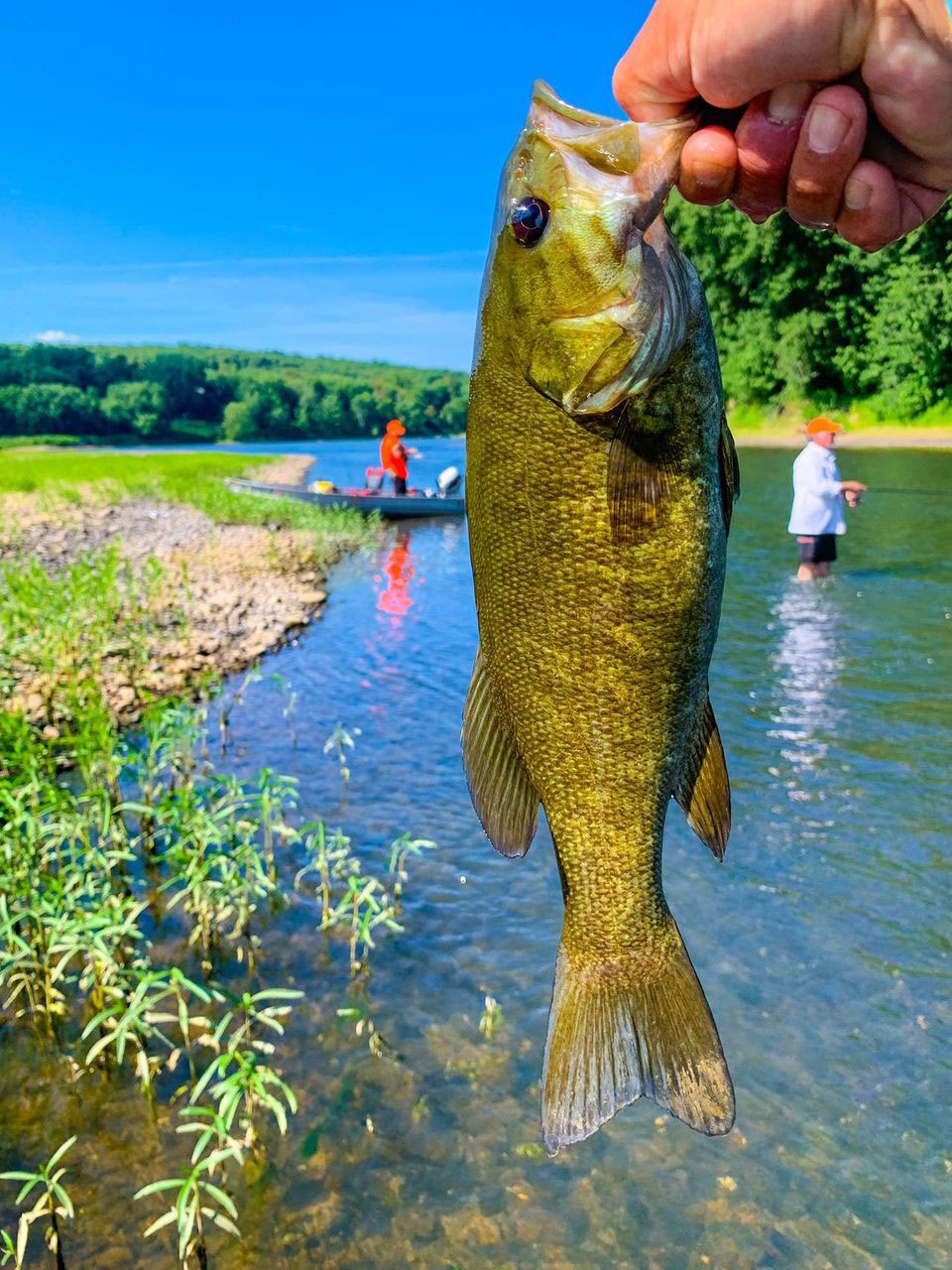
Where To Fish
Let’s talk specifics. This is a big river that extends from upstate New York down into Maryland, so there’s a lot of water to cover. The upper and middle portions of the river, which extend from the PA border at Great Bend down through Northumberland County, is where you’re most likely to find an abundance of smallies.
Luzerne County
Plymouth Flats is one of the best spots to hit because of its expansive, flat, and slow-moving waters. This area offers prime smallie fishing during the spring and fall when temperatures are cooler, and the fish are most active. Smallmouth bass often migrate to shallower waters in search of baitfish and other forage species, making these flats a productive fishing location.
| PA FISHING LICENSE |
| A valid Pennsylvania fishing license is required of persons age 16 and over to fish for any species of fish and are valid through December 31, 2024. Annual freshwater license in PA is $27.97, a non-resident costs $60.97 (senior and daily pricing is available). If an angler has a valid Pennsylvania fishing license they are not required to register with NOAA to fish Pennsylvania’s tidal portion of the Delaware River. Get your Pennsylvania freshwater fishing license at www.fishandboat.com/Fishing. |
The riverbed in Plymouth Flats features a mix of rocky structure, submerged logs, and scattered vegetation. These elements create ideal cover and ambush points for smallmouth bass. Anglers can target these areas with various lures and techniques to entice strikes.
The Hanover Township Access ramp offers the best place to launch a boat along the flats because you can cast along Richard Island, which is one of the only areas that has dense vegetation along this rocky river. Another incredibly popular area is referred to as the Berwick Test Track. This is a paved road that used to be a trial track for sports car racing.
The Berwick Test Track is characterized by an array of rocky structures and submerged formations that provide excellent cover and hiding places for smallmouth bass. These underwater features create ideal ambush points for bass, making it one of the most promising locations throughout Luzerne County.
One reason I’ve always been drawn to this area is because of the islands along this stretch of river. If you work your way down a mile or so, you’ll find French Island and a few smaller islands that create ledges that smallies love holding to. The Market Street bridge is also along this stretch, and each of these structures create drop offs, ledges, and depth variations which is why it’s so popular for smallmouth fishing.
Wyoming County
| ENCYCLOPEDIC OPTIONS |
| According to the encyclopedia Britannica the Susquehanna River is one of the longest rivers of the Eastern Seaboard of the United States, rising in Otsego Lake in central New York state, and winding down through the Appalachian Plateau in New York, Pennsylvania, and Maryland before flowing into the head of Chesapeake Bay at Havre de Grace, Maryland. Image courtesy of britannica.com.
|
Now let’s talk about Wyoming County which sits just north of Luzerne but offers the same quality of smallmouth fishing. The best spot? The Tunkhannock Creek Confluence. Did your ears perk up when I said confluence?
This section of the middle branch is where the Tunk Creek meets the Susky, and the mixing of water creates a dynamite area to catch smallies. Creeks often bring in cooler, clearer water, which can attract baitfish and other prey species. Smallmouth bass tend to gather near these confluence areas to feed on the abundant food supply, making it a hotspot for anglers.
Throughout the year, the fishing experience at the confluence can change as water temperatures fluctuate. In early fall, the cooling water temperatures often trigger increased feeding activity among smallmouth bass, making it an exciting time for anglers to explore this area.
As far as popularity goes, this is the most popular fishing spot along the middle branch of the Susquehanna, so don’t think I’m giving out any unique local secrets. That said, if you’ve never fished the river and you want to catch smallmouth, carp, muskie, or catfish – this is where you should go.
Smallmouth fishing is something special, and there are fewer places in the country better for it. The Susquehanna River has seen its share of environmental issues with coal mine fires, algae blooms, and nitrogen concentrations – but it’s survived against all odds.

